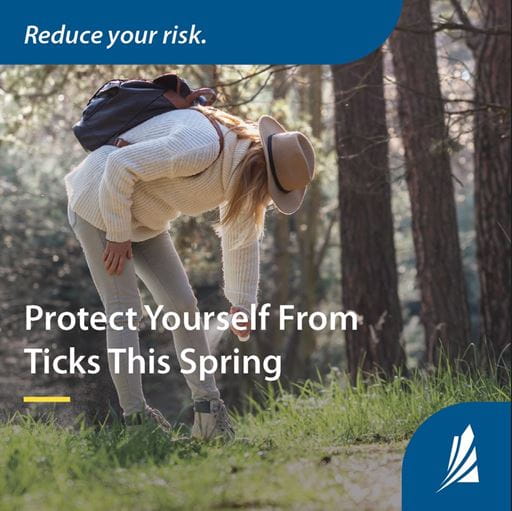Released on April 19, 2024
As temperatures start to climb, the Government of Saskatchewan is encouraging people to take precautions to reduce their exposure to tick bites and the risk of tick-borne illnesses when enjoying the outdoors.
"As we head outside to start enjoying the warmer weather, it is important to protect ourselves from the potential risk of tick bites," Medical Officer of Health Deputy Chief Dr. Julie Kryzanowski said. "By taking simple precautions, we can protect ourselves and our families when enjoying time outdoors. This includes being vigilant in wooded or grassy areas, even in your backyard and doing routine tick checks after being outside."
To prevent tick bites:
- Wear light-coloured clothes so ticks can be easily seen.
- Wear pants, long-sleeved shirts and shoes that do not expose your bare feet.
- Pull socks over your pant legs to prevent ticks from crawling up your legs.
- Use insect repellents that contain DEET or Icaridin. Apply repellent to clothes as well as your skin. Always read and follow the directions on the label. Some repellents may have age restrictions.
- Shower or bathe as soon as possible after being outside to wash off loose ticks and inspect for attached ticks.
The risk of exposure to Lyme disease is low in Saskatchewan, as most ticks found in Saskatchewan are the American dog tick, or wood tick. This species is active from mid-April to the end of July and does not transmit Lyme disease to people.

Blacklegged ticks, which can cause Lyme disease, are rare in Saskatchewan, although they can be introduced by migratory birds in early Spring and remain active throughout Fall.
In 2023, for the first time ever, active field surveys detected the presence of male blacklegged ticks in Saskatchewan. However, there is no evidence of an established reproducing blacklegged tick population in the province at this time.
After hatching from the eggs, ticks must eat blood at every stage to survive. Depending on their stage in the lifecycle, ticks may be very small and hard to see. When a tick is found, it should be removed immediately using fine-tipped tweezers to grasp the tick as close to your skin as possible. Once the tick has been removed, wash the area with soap and water and then disinfect the area and your hands with rubbing alcohol or an iodine swab.
People can submit photographs of ticks found on humans or animals using the eTick online system at www.etick.ca to receive timely identification of the type of tick that attached to a person, pet, or livestock animal.
While awaiting identification results, keep the tick(s) in a secure container and store it in the freezer. eTick administrators may request that some ticks be submitted by mail for quality control purposes or further research. Ticks should not be submitted unless requested.
For more information on ticks and Lyme disease, including how to submit a tick for identification and testing, visit: saskatchewan.ca/lyme or https://research-groups.usask.ca/ticks/#Passivesurveillance.
-30-
For more information, contact:
Media Relations
Health
Regina
Phone: 306-787-4083
Email: media@health.gov.sk.ca

